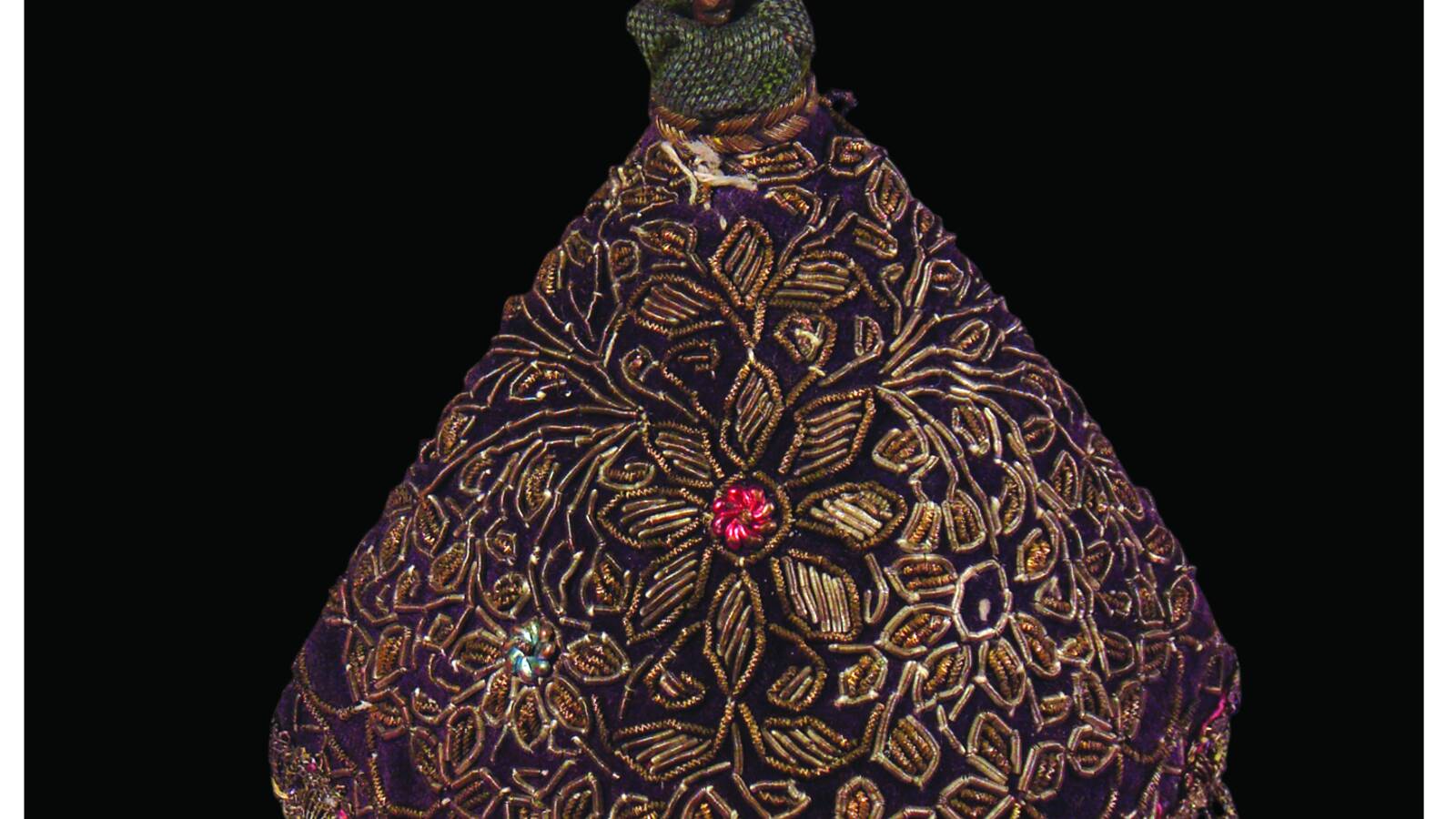Sermeh Duzi of South Khorasan
Sermeh Duzi is one of the oldest embroideries of Iran. There is no available text regarding the history of this sewing handicraft, however, after examining the decorations of the collars, army and royal clothing and flags of Iranians during history we can be certain that they paid much attention to decorations and producing the necessary yarns. There is no doubt that Sermeh is very close to filigree because they are very similar in type and history. The Sermeh craft flourished during the Parthian empire. During that time, decorative sewing was a part of export good of Iran. One of the handicrafts that made Alexander wondered was gold-brocade fabrics and decorative embroideries of Iran, one of which was Sermeh. There is a Sassanid piece of fabric on which a wine tree has been sewed by Sermeh embroidery. This craft continued during Sassanid dynasty. At the beginning of Islamic Era, the Iranians artists were commissioned to make the drapery of Kaaba which led to this art to reach even higher levels. Short Surahs and Ayahs from the holy Quran were applied by Sermeh Duzi in forms of calligraphies such as Muhaqqaq, Reyhan, Thuluth and Reqa. At first, the texts were written on the fabric by thick yarns such as Gheytan, and then Sermeh was applied on them. This technique gave the fabric a magnificent view. The elegant drapery of Kaaba from Timurid dynasty is now kept at the National Museum of Iran. All kinds of sewing techniques such as silk, Golabatoon, Deh Yek, Kamand, Sharafeh and Sermeh can be seen in this piece.
Sermeh Duzi has been highly regarded during the Islamic era. But it flourished in Safavid dynasty. Remaining artifacts of this era are proved of this. There is another piece of drapery kept in the Museum of Decorative Arts of Iran that belongs to the time when Sermeh was at its peak. On this piece, decorated with Animal Mehrab motifs, there are kinds of sewing such as Golabatoon, Dah Yek, Pileh, Sermeh and filigree. During the Afshar, Zand, Qajar dynasty and later, Sermeh Duzi continued and were still common, but lost its quality. Some of the motifs of Sermeh Duzi are “Godani”, “Sahrayi”, “Hashiehee”, “Jenaghi”,”Mehrabi”, “Gol-e Badami”, animal and figurative motifs, kinds of birds especially peacocks and owls, kinds of fruits like a cluster of grapes, stars and paisley. Today this handicraft is still popular in cities of Iran and is applied in decorative tableaus, collars, bust pieces, belts, money bags, tray covers, sugar covers, draperies, cushions and etc.
